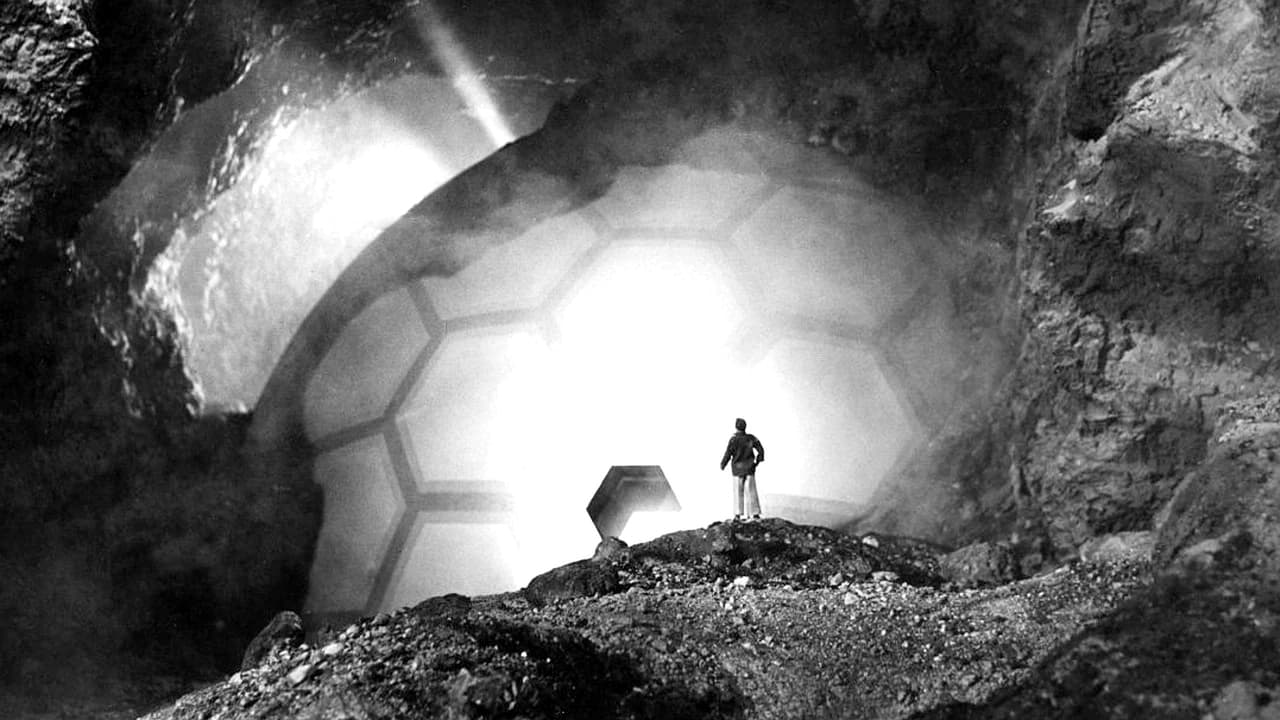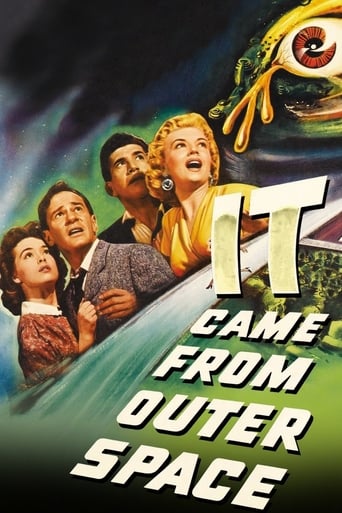

Very well executed
... View MoreWhat a freaking movie. So many twists and turns. Absolutely intense from start to finish.
... View MoreThe story, direction, characters, and writing/dialogue is akin to taking a tranquilizer shot to the neck, but everything else was so well done.
... View MoreIt’s fine. It's literally the definition of a fine movie. You’ve seen it before, you know every beat and outcome before the characters even do. Only question is how much escapism you’re looking for.
... View MoreA huge meteor like thing crash lands in the Arizona desert. An amateur astronomer discovers that it was in fact a spacecraft before it is buried by a land slide. As is the way, no one in his town believes him and soon after, various people are replaced by automaton duplicates.This bit of 50's sci-fi was originally released in 3D during the brief craze for the format at the time. Unlike two other studio releases from 1953, War of the Worlds and Invaders from Mars, this one was shot in black and white and was therefore more likely to have been considered an actual b-movie back in the day. In some ways though it is a more thoughtful feature than either of those two and is not a Cold War analogy in the traditional sense, as while it looks at themes of paranoia and xenophobia it tackles them from an opposite angle than was usual. The ugly looking one-eyed alien is at first presented as a killer monster of the unknown but once we get to understand the its perspective more we begin to comprehend that these beings are in actual fact benign creatures that are far more at risk from hostile elements of human society than we are of them. So I am guessing that the underlying message was one of not judging the 'alien' communists too rashly and to instead try to understand rather than attack and to be wary of lynch mob mentalities in your own back yard. A pretty radical message in those years of the so called Red Menace I would have thought.It was the first sci-fi film directed by Jack Arnold who would go on to direct others such as the seminal The Incredible Shrinking Man (1957). It also has additional kudos for being based on a story from one of science fiction's greatest writers Ray Bradbury, namely 'The Meteor'. So, there is certainly some talent linked to this one. The Arizona desert setting is also really very good and the alien is a memorable bit of design work for its time, with its point-of-view also imaginatively given via what can best be described as 'giant eye view'. There is also some Theremin music, which seems quite par-for-the-course now but which I am sure was pretty original and super-weird back in 1953. Because the story ultimately doesn't have typical alien villains, the dynamic is less suspenseful than is usual but this is offset by the more original cerebral approach to sci-fi which ensures that the film remains more interesting than many similar efforts from its time in other ways. It maintains the unorthodox approach right to the end too, by ending on a credit sequence (replete with images of the main characters to go along with it) rather than starting with one as was traditional, which again shows that they were actively trying for something different here in several ways.
... View MoreIt Came From Outer Space (1953) is a Horror/Sci-Fi film starring Richard Carlson as John Putnam and Barbara Bush as Ellen Fields. It's about a spaceship crash discovered by John and Ellen. The cinematography is excellent. The music is dark and mysterious. It really enhances the theme especially when Ellen and John get out of the car to look around and then afterword's when they drive off. I recommend people who enjoy horror and sci-fi films or movies about aliens to watch this creepy and spooky feature.
... View MoreBeautiful long shots of barren desserts. And of cars going down empty American highways. Barbara Rush was easy on the eyes. Richard Carlson was sort of an all American leading man. He plays the only sane person in a small desert town which intensely fears the space ship that has landed in the desert.The bubble like creatures from the space ship were good enough for the time this film was made, I guess.Like other sci-fi movies of the time (eg. The Day the Earth Stood Still in 1951) the film portrays base human instincts as negative and violent. Even the background score is quite similar to The Day the Earth Stood Still. The movie is based on a story by Ray Bradbury.(6/10)
... View MoreJack Arnold directed this Ray Bradbury story that stars Richard Carlson as astronomer John Putnam, who, along with his girlfriend Ellen Fields(played by Barbara Rush) witness a meteor crash in the desert of Arizona. They go to investigate, and John discovers that it is a spaceship, not a meteor that has crashed, along with a strange-looking alien. Unfortunately, he's the only one that does, and the suspicious local sheriff(played by Charles Drake) is highly skeptical. When two local telephone pole workers(played by Joe Sawyer & Russell Johnson) are replaced by alien lookalikes, John knows that something sinister is happening, and must be stopped... Early science fiction tale is rather good, though does show its age in some ways(a bit melodramatic at times!) Overall though, entertaining and thoughtful.
... View More